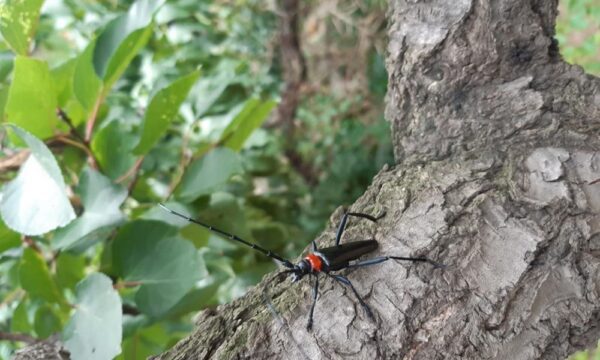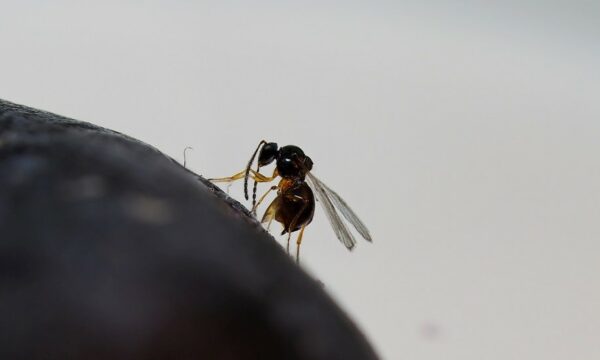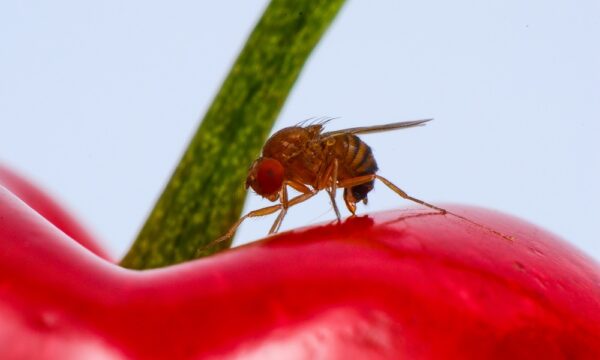 CABI scientist Dr Lukas Seehausen has successfully tracked down and killed the Asian hornet (Vespa velutina) and destroyed its nest in Le Noirmont, Switzerland, after closing the net on the predator using state-of-the-art radio telemetry technology.
CABI scientist Dr Lukas Seehausen has successfully tracked down and killed the Asian hornet (Vespa velutina) and destroyed its nest in Le Noirmont, Switzerland, after closing the net on the predator using state-of-the-art radio telemetry technology.
Dr Seehausen, who is based at CABI’s Swiss Centre in Delémont, Saidou Nacambo and Dr Marc Kenis have been commissioned by the Swiss Federal Office for the Environment to establish a surveillance programme in the threatened cantons in case the Asian hornet invades Switzerland and threatens pollinating bees and other beneficial insects.
The Asian hornet was first found in southwestern France in 2004 but has since dispersed in all directions and is now established in Spain, Portugal, Italy, Germany, Belgium, United Kingdom, the Netherlands, and now also in Switzerland.
It is feared that the insect will have a significant impact on honey production, pollination services, and biodiversity and could also compete with the European hornet and native wasps.
Although the Asian hornet is no more aggressive towards humans than its European ‘neighbour’, it is much more abundant in invaded regions. Its bites are painful and can be dangerous for people with allergies. In September, the first Asian hornets were seen to attack bee hives in Le Noirmont.
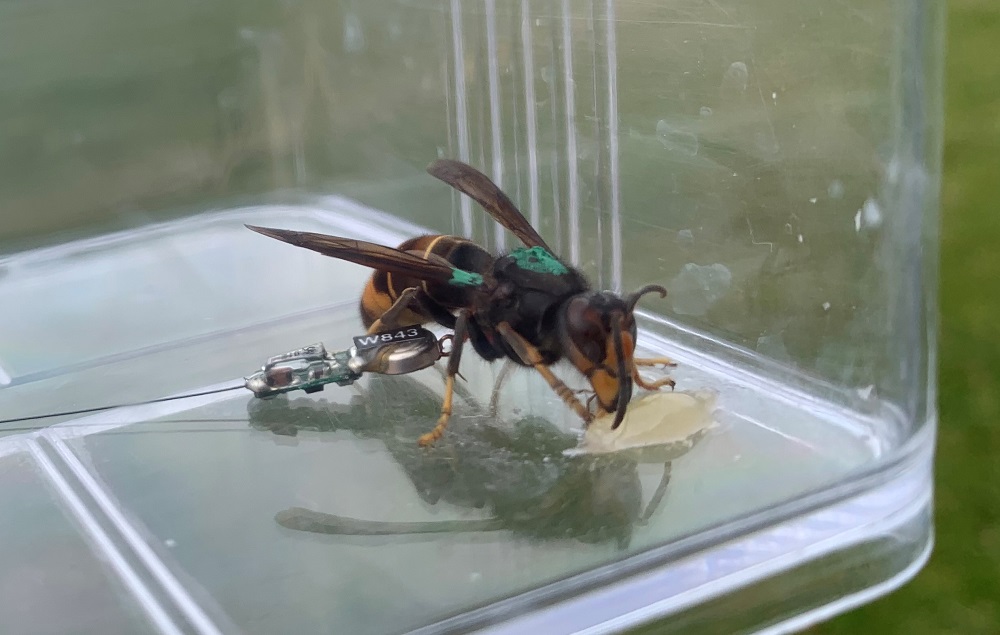
A captured Asian hornet was electronically-tagged before being let loose to lead Dr Seehausen back to its nest where it could be destroyed (Credit: Lukas Seehausen/CABI).
The scientists started by catching Asian hornets in Le Noirmont and released them to follow their flight trajectory. They then use a method of triangulation – by releasing them from different locations – to help define the general area of the nest site in Le Noirmont.
Dr Seehausen then managed to put an electronic tag on two captured Asian hornets before cunningly letting them fly off and lead him to their nest after the signal from the attached transmitter was picked up using a radio antennae and receiver.
“The nest was initially difficult to find because it was at about 35m on a tree in the middle of a forest between the town and the French border. But after tagging the hornet it was sure to try and return to its nest after a short period of captivity. I had only tried the radio-telemetry technique once before in Geneva but it worked quite well and led me to the nest which has now been destroyed.”
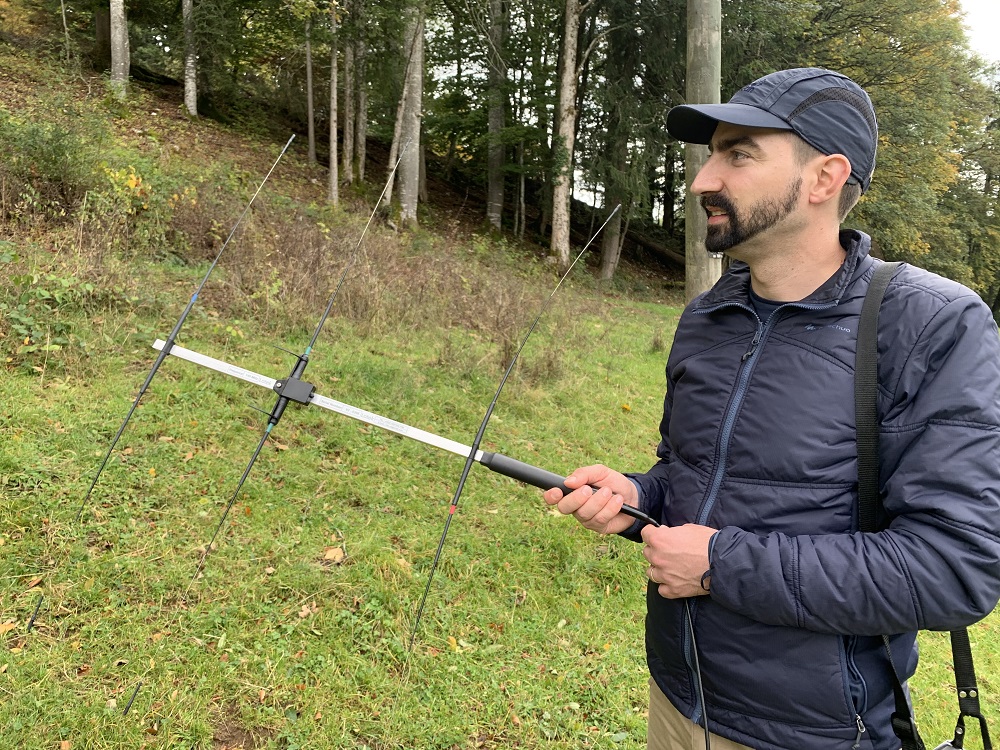
Dr Seehausen holds his antenna in a bid to locate the Asian hornet’s nest in Geneva.
Dr Seehausen added, “The problem was to get a definite visual identification of the Asian hornet. We sought help from a local video production company called Ellipse that owns a drone and a local wildlife photographer with a long-range zoom lens.
“The photos confirmed that it was indeed a nest of the Asian hornet and I estimated it to be about 40-50cm in diameter, which is relatively small (the first nest found in Geneva was about 80cm in diameter).
“Due to the location of the nest – high up in a tree in the middle of the forest and with no road access – we had to hire professional tree climbers to help in the task of destroying the nest and helping to prevent further spread of the Asian hornet in Switzerland.”
Dr Seehausen said, the possibilities of controlling the Asian hornet at the moment are limited and the destruction of the nest to manage their spread is currently the best option.
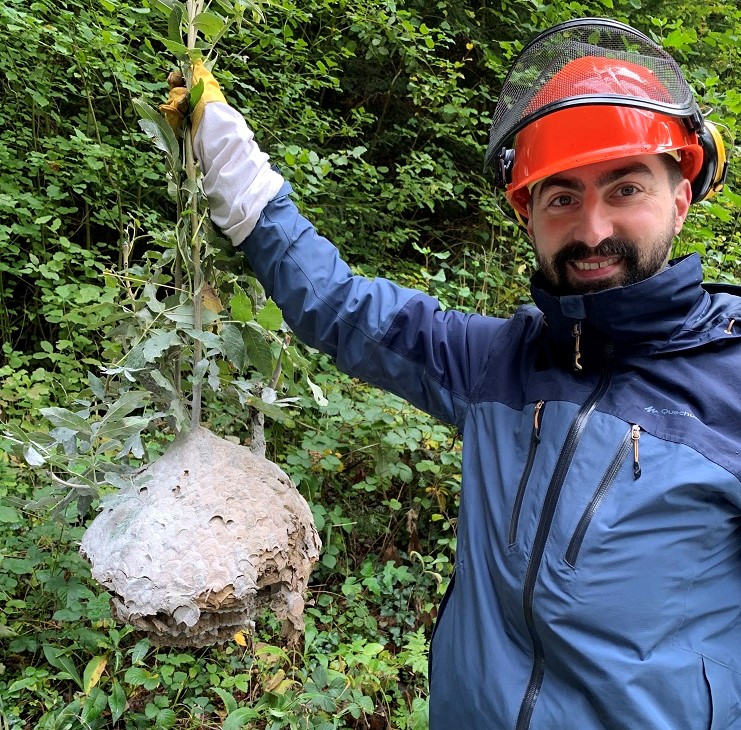
Dr Seehausen with the destroyed Asian hornet nest.
Additional information
Main image: The Asian hornet nest found by a wildlife guard in Geneva (Credit: Daniel Cherix/Lausanne University).
Find out more about CABI’s work ‘Monitoring the invasion of the Asian hornet Vespa velutina in the Jura and in Switzerland’ from the project page. See the Asian hornet nest being taken down and destroyed in this
Canal Alpha TV interview (in French) featuring Dr Seehausen. Click on image below to view. 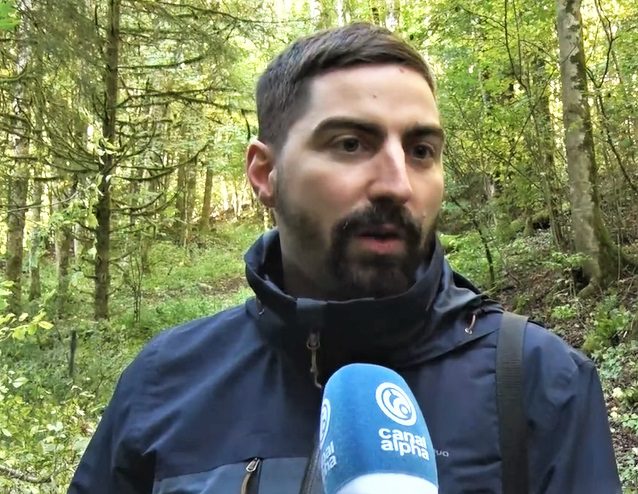
Related News & Blogs

